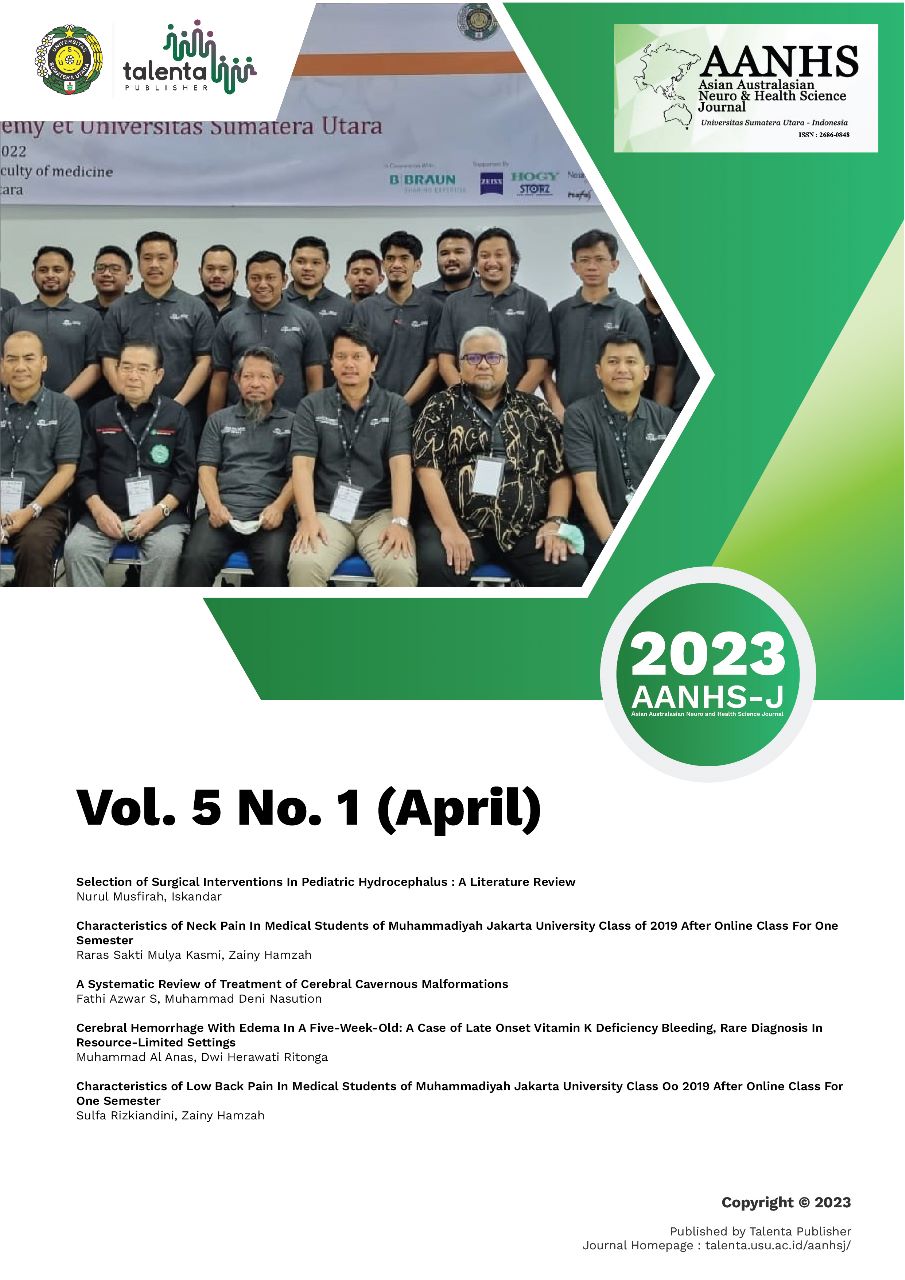Cerebral Hemorrhage with Edema in A Five-Week-Old: A Case of Late-Onset Vitamin K Deficiency Bleeding, Rare Diagnosis in Resource-Limited Settings
DOI:
https://doi.org/10.32734/aanhsj.v5i1.11040Keywords:
vitamin k deficiency bleeding, late-onset, subdural hemorrhageAbstract
Introduction: Vitamin K deficiency bleeding (VKDB) is a term that describes the condition of hemorrhagic disorders in newborns. Late-onset VKDB occurs between the second week and sixth month of life. Intracranial hemorrhage often occurs in cases of late-onset VKDB and can cause 14-20% mortality and 40% long-term neurological morbidity, so it is important to treat patients until they are stable, especially with limited health facilities.
Case Report: A baby boy aged 1 month 8 days was brought by his parents to RSUD Deli Serdang Lubuk Pakam with the chief complaint of an enlarged stomach, accompanied by paleness, weakness, convulsions, and altered consciousness. A midwife assisted the delivery with unknown history of immediate vitamin K injection after birth. We diagnosed the patient with VKDB according to the clinical symptoms. The head CT scan showed subdural and subarachnoid hemorrhage with cerebral edema. We transfused the patient with Packed Red Cells and Fresh Frozen Plasma 20 cc/12 hours 5 times, administered Vitamin K injection 3 mg/IM for 3 days, and other supportive therapy. The patient's condition improved within the third day of hospitalization with recovered consciousness and was transferred to the referral hospital.
Discussion: The key feature of late-onset VKDB is the incidence of ICH in 30-88% of patients, leading to a high incidence of mortality. This study highlights the importance of prompt, and early treatment of VKDB with proper history taking, clinical examination, and relevant investigations to reduce morbidity and mortality.
Conclusion: In conclusion, secondary late-onset PDVC is more common than the primary subtype, and late-onset PDVC is still an important cause of morbidity and mortality in developing countries including Indonesia, where vitamin K prophylaxis is not routinely performed
Downloads
Downloads
Published
How to Cite
Issue
Section
License
Copyright (c) 2023 Asian Australasian Neuro and Health Science Journal (AANHS-J)

This work is licensed under a Creative Commons Attribution-NonCommercial-ShareAlike 4.0 International License.
The Authors submitting a manuscript do understand that if the manuscript was accepted for publication, the copyright of the article shall be assigned to AANHS Journal.
The copyright encompasses exclusive rights to reproduce and deliver the article in all forms and media. The reproduction of any part of this journal, its storage in databases and its transmission by any form or media will be allowed only with a written permission from Asian Australasian Neuro and Health Science Journal (AANHSJ).
The Copyright Transfer Form can be downloaded here.
The Copyright form should be signed originally and sent to the Editorial Office in the form of original mail or scanned document.














